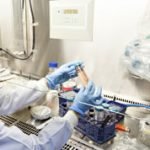Syndromic Diagnostics Help Combat AMR
New research provides a compelling look at the global impact of antimicrobial resistance—and the results are alarming. Looking at data from 204 countries and territories, researchers estimated there were 1.27 million global deaths directly attributable to antibiotic-resistant bacterial infections in 2019.1 Overall, 4.95 million deaths were associated with antibiotic resistance.1
Based on those findings, an editorial in Lancet describes the global burden of antimicrobial resistance as “likely to be higher than that of HIV or malaria.”2
“Understanding the burden of AMR and the leading pathogen–drug combinations contributing to it is crucial to making informed and location-specific policy decisions,” the study authors state.1 The enormous toll bacterial AMR takes on people throughout the world underlines the importance of combatting antibiotic resistance with every tool available, including effective infection control and prevention, vaccination programs and the development of new vaccines, and continuing research and development of new antibiotics.
Effective diagnostics are another vital tool in the fight against antibiotic resistance. Timely diagnostic answers can help reduce the use of unnecessary antibiotics and, when antibiotics are needed, help ensure they are appropriately targeted.
Syndromic testing from BioFire can help give clinicians the answers they need in a clinically relevant timeframe. Using the syndromic approach, BioFire® FilmArray® Panels detect a broad grouping of possible pathogens in one quick test. Some of the BioFire Panels also detect relevant antimicrobial resistance genes, enabling clinicians to further optimize treatments.
In fact, the BioFire Panels have been shown to impact therapy decisions and antibiotic use. Read on to learn how multiplex PCR testing with the BioFire Panels may help reduce unnecessary antibiotic use and support antibiotic stewardship programs.



